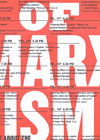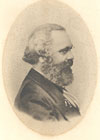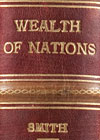Crises
1637: Tulipmania
At the end of the 16th century, the first tulips were imported from the Middle East to the Netherlands. Instantly, tulip bulbs became collectors' items and status symbols for the happy few who could afford them. Prices were very high: in 1637 the recommended price for one single bulb was 3000 guilders (equivalent in 2008 to 31,000 euro). Against a background of plague and war, speculation on tulip bulbs went out of hand. People sold their property to get hold of tulip bulbs offered by speculators, called "florists". In February 1637 the market collapsed and panic reigned at the Stock Exchange. The unhappy traders who could not retrieve their money tried to get support from local government. But no structural solution to the problem was found. In pamphlets and newspapers, the tulipmania was denounced as a breakdown of morals. Tulipmania is known as the first speculative bubble in world history. But its influence on the economy of the Low Countries was limited. [Goldgar, Anne, Tulipmania : money, honor, and knowledge in the Dutch Golden Age Chicago, Ill. [etc.] 2007. Call number: 2007/3756]
See also: The complete Tulip Book by Jacob van Swanenburch
1720: Speculators
The Scottish economist John Law thoroughly researched the banking system in London and Amsterdam before he settled in Paris in 1716 and launched his plan to exchange paper for gold. At that time the French had to cope with an immense budget deficit. Law initiated establishment of the Banque Royale in 1718, a state bank that issued huge amounts of paper money. In the eye of the superficial beholder, the French economy thrived. An expanded outlook led to the French American colony Louisiana. Law bought the ailing Mississippi Company and started to issue shares that were "covered" by state bonds. Thousands of Frenchmen were lured by misleading stories about gold mountains overseas. Speculation fever reached its height at the start of 1720, but suddenly, public confidence broke down during the summer. The bubble burst, and John Law left France to spend the last years of his life in Venice. At the same time in England, an analogous case, the South Sea Bubble, occupied public debate. In Amsterdam, too, speculation and a proliferation of local stock companies led to a crisis. Thiers, Adolphe. Histoire de Law. [Avec un avertissement de J. Hetzel]. Leipzig : Edition Hetzel, Duerr, Libraire-Editeur, 1858. Call number: F 149/18]
See also: Collection on the 1720 bubbles
See also: Commercial and financial serial publications of the Netherlands Economic History Archives. 1580-1870
1763: Bankrupt
During the Seven Years War (1756-1763) many banks in Amsterdam were involved in enormous money loans to the belligerent nations: England and Prussia versus France, Austria, and Russia. Most of Europe applied to Amsterdam for money. In 1763 the treaty of Hubertusburg ended the war. Prices of commodities plummeted, the exchange business was the first to collapse, and many European mercantile houses went bankrupt. The bankruptcy of the Amsterdam banker De Neufville Brothers was a crucial event in this process. The financial crisis enriched Dutch literature with some delightful comedies of manners depicting bankers' circles as a shameless, depraved, old-boy-network.
See also: Collection Huydecoper van Maarsseveen, governor of Amsterdam
1822-1837: Adventurers
The Scottish general Gregor MacGregor (1786-1845) was involved in the South American independence struggles against the Spanish. Back in Scotland, the highly imaginative MacGregor posed as the Prince ("cacique") of Poyais, a small nation in the vicinity of Honduras. He depicted Poyais as a country richly endowed with gold mines and full of anglophile natives. It would be stupid not to exploit and invest in such a region. MacGregor succeeded in getting a loan of 200,000 pounds from a well-known bank, and he himself issued shares and land concessions. He also wrote a 350-page book on Poyais under the pen name of Thomas Strangeways. He had Poyaisian dollars printed in Edinburgh. Many people exchanged their pounds for the concessions and dollars. In 1822 two vessels with a few hundred emigrants - one banker among them - embarked for the imaginary country. Most died from tropical diseases and hardships in the Central American jungle. As communication was poor then, the impostor was not exposed until 1837. General MacGregor died as a pensioner in Venezuela.
See also: Collection MacGregor
1929-1933: Great Depression
Overproduction in the American agriculture and industry was at the basis of the Great Depression. On Thursday, October 24, 1929, Wall Street crashed. The banks were besieged by people wanting their money. The American crisis infected European countries, which American funding would have enabled to regain their equilibrium following the end of World War I. Nazi Germany solved the economic crisis with projects giving employment opportunities and by promising Lebensraum across the eastern border. The Soviet Union industrialized at a dazzling pace and at the expense of immense suffering by its inhabitants.
See also: Data files on historical prices and wages
See also: Collection of commercial papers 1900-1940
See also: Collection re investments
1973: Oil crisis
The crisis started with an explosive increase in oil prices by the important Arabian oil producing countries. In addition, oil supplies were slightly reduced to give the impression there was a shortage of oil. The OPEC countries made price agreements. Saddam Hussein was a pioneer of this policy. On October 17, 1973, the Arabian countries announced a boycott against the western countries that had supported Israel during the Yom Kippur war, including the United States. Energy prices rose dramatically. Inflation, government budget deficits, shrinking economies, unemployment, and severely reduced share prices were reminiscent of the 1929 crash. Western countries took various initiatives to diminish their dependence on the Arabian oil-producing nations.
See also: International Federation of Chemical, Energy and General Workers' Unions Archives (ICEF)
See also: CIDR collection
2007-2009: Financial Crisis
Because of this financial crisis, Marx is once again in vogue. According to Karl Dietz Publishers, sales of Das Kapital doubled in a few months during 2008. Explanations for the crisis can be found by reading Marx and other classical economists closely. Obama's program for recovery was inspired by the Keynesian theory that government must stimulate consumer demand during a recession. Adam Smith and David Ricardo are represented by free market adherents in the debate on protectionism. Rereading classics is said to lead to modern insights. Apart from all relevant publications, the IISH has the archives of three important theorists: Marx, Ernest Mandel and André Gunder Frank.
See also: The Return of Karl Marx (The "Comeback Kid" of the Economic Crisis)

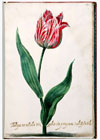

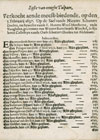


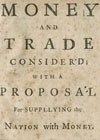
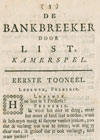
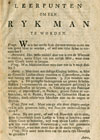

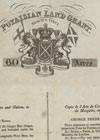





![Brochure of the Iranian Tudeh Party, [1973] Brochure of the Iranian Tudeh Party, [1973]](images/bro5647-4-t.jpg)
